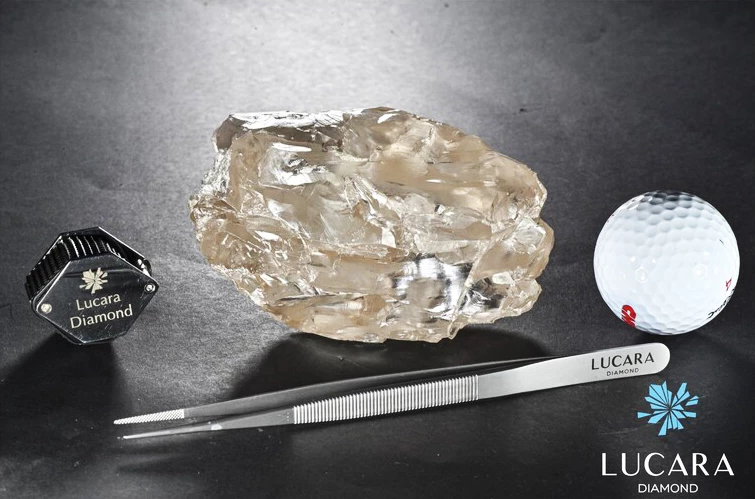The second largest diamond in the world has been discovered in Botswana. Canadian mining company Lucara Diamond used an advanced X-ray scanner to find a 2,492-carat diamond from its Karowe Diamond Mine. That's a whopping 17.58 oz (498.4 g).
The largest gem-quality rough diamond ever found was the famous Cullinan Diamond that was dug up at Premier Mine in Cullinan, Transvaal Colony, South Africa in 1905. It weighed in at a record 3,106 carats (21.9 oz, 621 g). When cut up, it yielded 105 stones, including the Great Star of Africa and others that are part of the British Crown Jewels.
Now, there's a new second place champion, only this one is from Botswana, which is becoming a major player in the gem market.
The still-to-be-named gem was discovered using a technique called Mega Diamond Recovery (MDR) X-ray Transmission (XRT). Put simply, this consists of a conveyor belt on which the kimberlite ore from the diamond mine is spread evenly. This passes over an X-ray beam with a sensor set above it.

A computer processes the data gathered from the scan and creates a series of images that identifies individual stones by shape and density. If the density is close to that of a diamond, as the ore falls off the end of the belt, a jet of air blows the candidate into a collection bin.
According to the company, MDR XRT is particularly good for sorting out large, gem-quality diamonds and has already found some exceptional stones, including the 1,758-carat Sewelô diamond and the 1,109-carat Lesedi La Rona.
Just to give some perspective, the largest synthetic diamond is the Celebration of India, which comes in at a wimpy 75.33 carats. While synthetic diamonds have become easier to produce in recent years, they don't provide much competition for the really top-tier flawless diamonds.
This is partly due to the technical challenge and partly because of how the diamond market works. They maintain their value through scarcity, which is rigorously policed by the international diamond cartel, which fights against smuggling and blood diamonds. Like diamond miners, synthetic diamond makers have a vested interest in not disrupting the market, so they tend to concentrate their efforts lower down the food chain with the cheaper jewelry and industrial stones.
"We are ecstatic about the recovery of this extraordinary 2,492-carat diamond," said William Lamb, President and CEO of Lucara. "This find not only showcases the remarkable potential of our Karowe Mine, but also upholds our strategic investment in cutting-edge XRT technology. The ability to recover such a massive, high-quality stone intact demonstrates the effectiveness of our approach to diamond recovery and our commitment to maximizing value for our shareholders and stakeholders."
Source: Lucara Diamond





